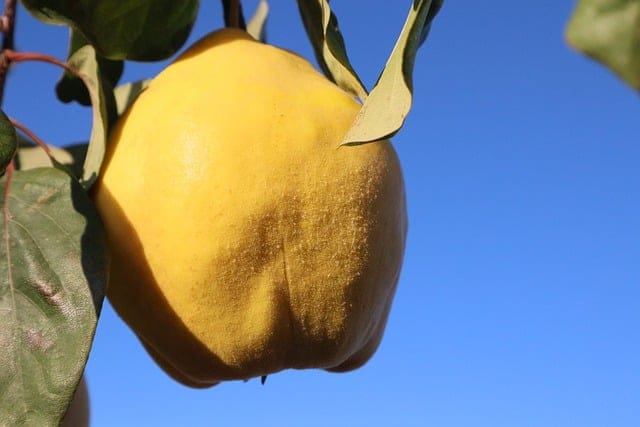How to grow Quinces
Growing quinces (Cydonia oblonga) can be a rewarding experience for fruit gardeners

In this article:
- Introduction
- Choosing the Right Quince Variety
- Climate and Soil Requirements
- Planting Quince Trees
- Watering and Mulching
- Pruning and Training Quince Trees
- Fertilizing Quince Trees
- Pest and Disease Management
- Fruit Thinning
- Harvesting Quinces
- Storing and Using Quinces
- Common Quince Growing Problems
- Frequently Asked Questions
- Conclusion
Introduction
Growing quinces (Cydonia oblonga) can be a rewarding experience for fruit gardeners. Quinces are small, deciduous fruit trees that produce fragrant and unique-tasting fruits. In this article, we will guide you through the process of growing quinces, from choosing the right variety to harvesting and using the fruits.
Choosing the Right Quince Variety
The first step in growing quinces is selecting the right variety for your climate and personal taste preference. Common quince varieties include 'Vranja,' 'Champion,' 'Smyrna,' and 'Pineapple.' Research about the flavor profile, size, and disease resistance of each variety before making your choice.
Climate and Soil Requirements
Quince trees thrive in temperate climates, preferably in regions with cold winters and mild summers. They require well-drained soil with a pH level between 6.0 and 7.0. Ensure that the planting site receives full sun exposure for at least six hours each day.
Planting Quince Trees
Quince trees can be planted in spring or fall when the soil is workable. Dig a hole twice the size of the root ball and place the tree in the hole, keeping the graft union above the soil level. Backfill the hole with soil, gently firm it around the roots, and water the tree thoroughly.
Watering and Mulching
Proper watering is crucial for the growth of quince trees. Water deeply and regularly, especially during dry spells. Apply mulch around the base of the tree to conserve moisture and suppress weed growth. Keep the mulch several inches away from the trunk to prevent rotting.
Pruning and Training Quince Trees
Pruning helps shape quince trees and improves fruit production. Prune during late winter or early spring before new growth begins. Remove any dead, damaged, or crossing branches. Also, thin out the canopy to improve air circulation and light penetration.
Fertilizing Quince Trees
Quinces require regular fertilization to maintain healthy growth. Apply a balanced fertilizer in early spring and mid-summer. Follow the instructions on the fertilizer package for the correct application rates. Avoid excessive nitrogen fertilization, as it can promote foliage growth at the expense of fruit production.
Pest and Disease Management
Quince trees are susceptible to various pests and diseases, including aphids, codling moths, fire blight, and quince rust. Regularly inspect the trees for any signs of infestation or disease, and take appropriate action promptly. This may include using organic insecticides or disease-resistant varieties.
Fruit Thinning
Thinning is essential for ensuring the development of high-quality quince fruits. When the fruits are about an inch in diameter, remove excess fruits, leaving an adequate spacing of about six inches between them. This allows proper air circulation and prevents overcrowding.
Harvesting Quinces
Quinces are ready for harvest when their skin turns golden yellow and they emit a strong fragrance. Twist the fruits gently to separate them from the tree. Avoid pulling or yanking them, as this may damage the branches. Handle the harvested quinces with care to prevent bruising.
Storing and Using Quinces
Quinces can be stored for up to several weeks in a cool, dark place with good air circulation. They can also be used for various culinary purposes, such as making jams, jellies, pies, and desserts. Their high pectin content makes them ideal for preserving.
Common Quince Growing Problems
In this section, we will discuss some common problems that quince growers may encounter, such as fruit dropping, brown rot, and powdery mildew. We will provide tips on how to identify, prevent, and treat these issues.
Frequently Asked Questions
Here, we will answer some frequently asked questions about growing quinces, addressing concerns about tree size, pollination requirements, and common diseases. If you have any specific questions that are not covered in this article, feel free to reach out to us.
Conclusion
Growing quinces can be a rewarding and enjoyable experience for both experienced and novice fruit gardeners. By following the guidelines provided in this article, you will be on your way to cultivating healthy quince trees and enjoying the delicious fruits they produce.
